Barking and District Historical Society
Main menu:
- Latest News
- Lectures 2010
- Lectures 2011
- Lectures 2012
- About BDHS
- Programme
- Pictures 1
- Pictures 2
- Alfred Russel Wallace
- Barking Pageant
- Bookplate
- Chadwell Heath
- Christmas
- Edward VIII Pillar Box
- Herbert Hensley Henson
- Keep Smiling
- Pearly Queen
- Police Station Chadwell Heath
- Rippleside Cemetery
- Robin Hood Pub
- St. Margaret's Church, Barking
- St. Patrick's Church, Barking
- St. Thomas' Church, Becontree
- Valence
- Pictures 3
- Articles
- The First Members
- It's a Fishy Story
- John O'Rourke: Footballer
- Ken Aston 1915-2001
- Memories
- Some Barking and Dagenham Lives
- Tom White Interviews
- Tom White Interviews 2
- Stanley Philo
- Our Borough's Rich Past Revealed
- Some VC Heroes
- Barking Sewage Works 1868
- Cricket in Dagenham
- Made in Dagenham
- James Paroissien 1784-1827
- Fred Brand
- Tuck Postcards
- Barking Brewery
- Chairman's Reports
- Constitution
- Contact
- History of Society
- Chronology
- Membership
- Equal Opportunities
- AGM Reports
- Treasurer's Reports
- BDHS Officers etc.
- Some Links
- Obituaries
- Newsletter Contents
Tuck Postcards
Articles
Tuck Postcards
Tony Clifford
It has been said that the firm of Raphael Tuck & Sons are arguably the most important publishing house in the history of picture postcards, considering their vast output of some 10,000 series from the first cards of 1899 to the end in 1962. Trying to unravel the complexity, inconsistency and vagaries of Tuck's publishing output is not easy; in particular, the many cards produced by the firm in their role as commercial printers. Many cards were un-numbered and printed outside their usual run of series, often the result of private commissions. Six cards, almost certainly published originally as a set, were published for "F. Clarke, Barking, Essex" and show unsigned watercolour views of Choat's Lane, the Curfew Tower, Eastbury House, Longbridge Road, the Recreation Ground, and Town Quay. All have the word "Oilette" on the front. "Oilette" was a type of card used by Tuck, starting in 1903, with a surface designed to appear as a miniature oil painting, so these un-numbered Barking cards date from that year at the earliest. According to Frogley, F. Clarke succeeded Austin Mays as bookseller and stationer at 57 Broadway when Mays took over the Royal Oak public house in 1890.
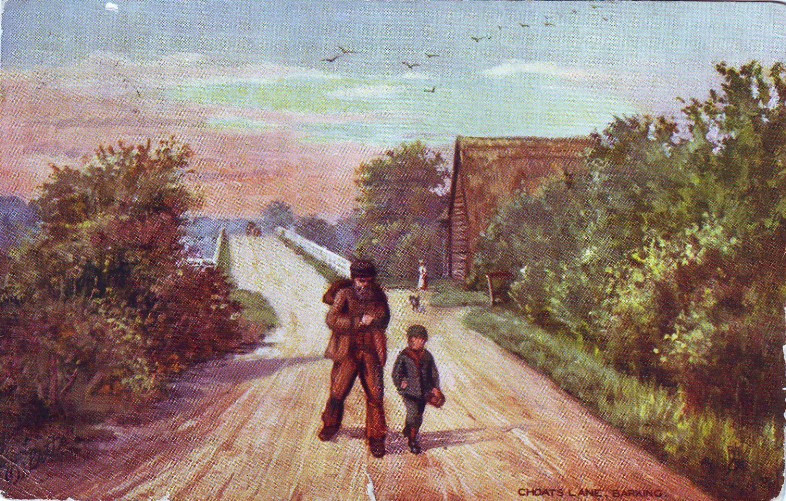
Choat's Lane, Barking
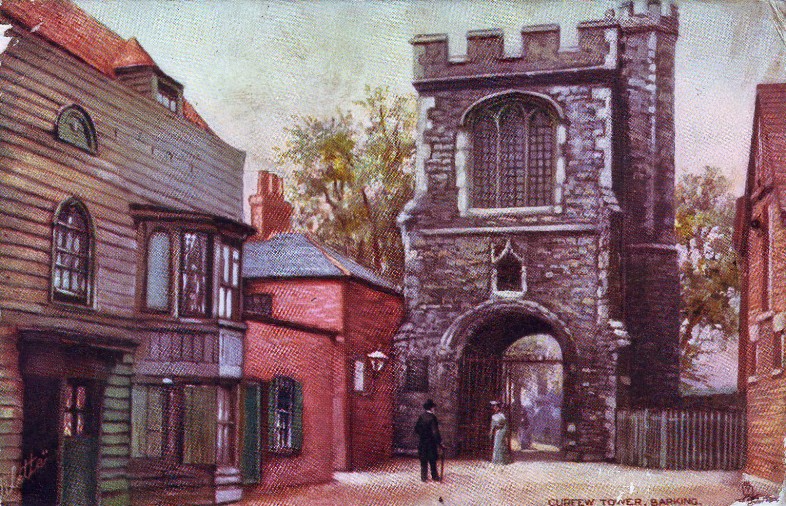
Curfew Tower, Barking
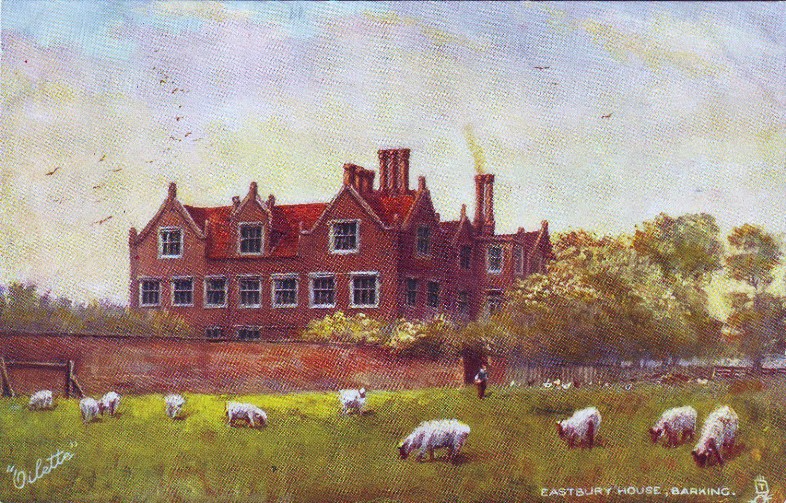
Eastbury House, Barking
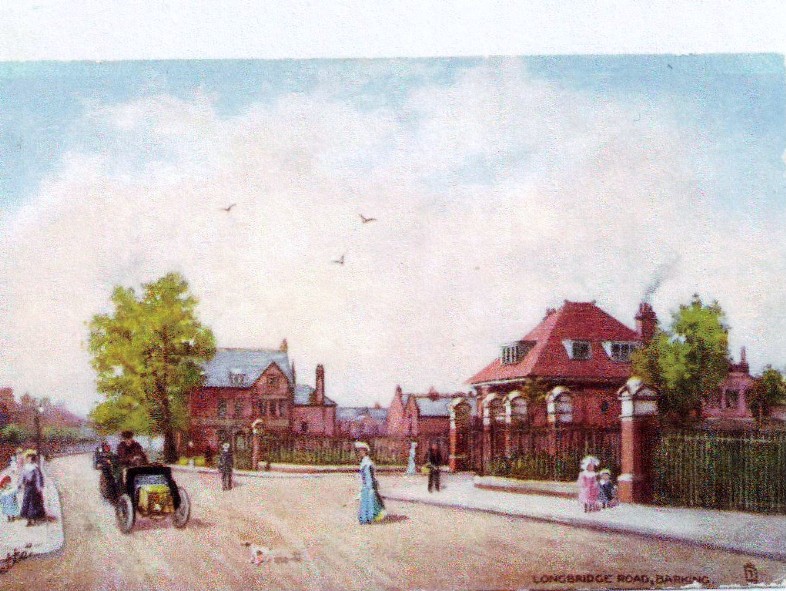
Longbridge Road, Barking
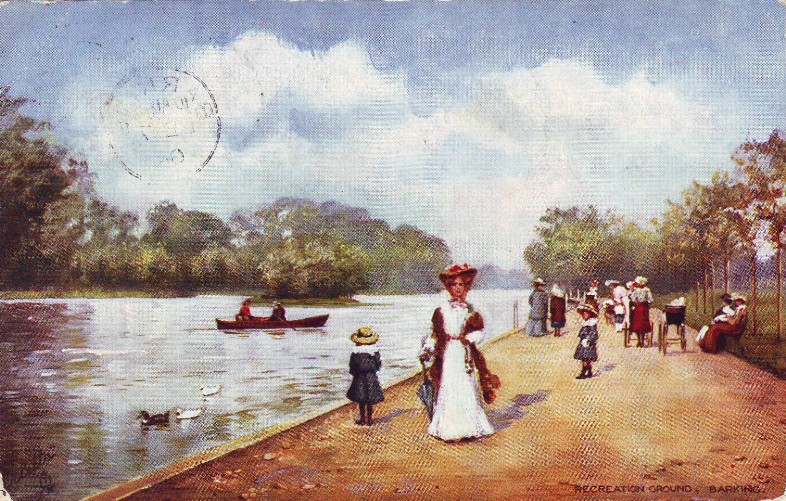
Recreation Ground, Barking
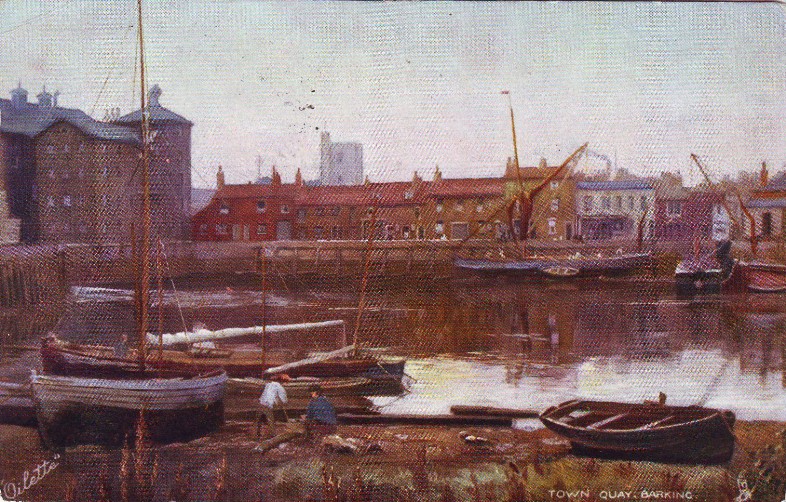
Town Quay, Barking
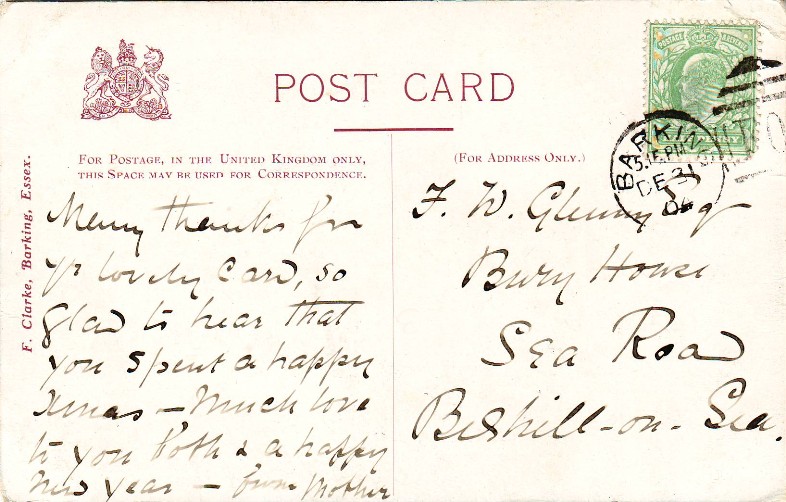
Merssage on Reverse of Town Quay Postcard
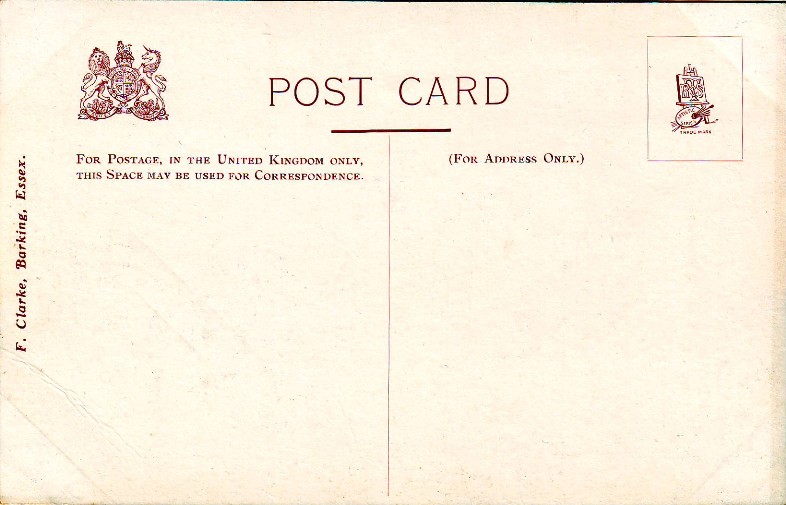
Reverse of Tuck Postcard